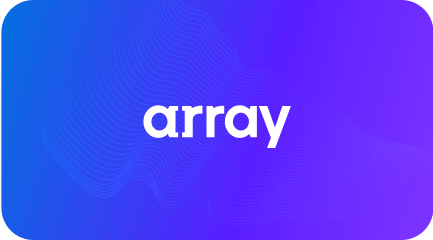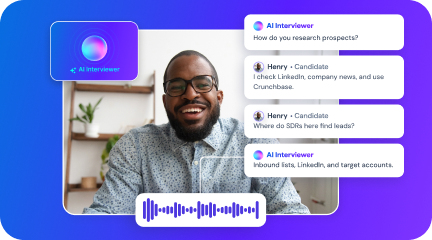Most companies didn’t have the chance to be intentional about their transition to remote hiring 20+ months ago. While this was acceptable at the time, a stopgap remote hiring process is no longer enough.
So what should TA teams do to build a remote interview experience that’s an asset rather than a liability? In a recent LinkedIn live conversation, Teddy Chestnut joined GoodTime.io’s Director of Product Marketing Scott Parker to tackle this exact question.
1. What are some specific ways that remote hiring has impacted the hiring process?
Our new remote-first world has radically transformed the expectations of those applying for open roles. Remote working options are no longer seen as a perk or an incentive to high-performers, but table stakes for attracting qualified candidates. Teddy shares his perspective:
“A company that’s saying to candidates, ‘You have to be in the office, or you have to be even hybrid,’ is at a distinct disadvantage to a company that is saying, ‘We’re going to find the best talent no matter where they are. We’re going to build a culture that allows them to thrive, to join the team, to contribute from Boise, Idaho, or Montana, or South Carolina, or New York, or San Francisco, or all of those places. And so we’re seeing a real push to try to figure out how to build teams that are now resilient to that new work environment.
2. How do you convey that your remote company is a desirable place to work?
Remote candidates obviously don’t have the opportunity to be wowed by a trendy office or in-person perks. With these incentives no longer an option, the responsibility falls to recruiting teams to forge a personal connection in the short time they have with candidates. This requires, among other things, that hiring teams fight against the natural tendency to seem distracted. As Teddy explains:
“Just because it’s a Zoom interaction doesn’t mean it’s not a human interaction. . . There’s a massive difference between, ‘I’m literally right here with you and you can feel how focused I am on you,” vs. ‘I’m kind of distracted. My head’s down here, I’m on Slack, I’m over there.’ Coaching teams to truly emphasize the importance of trying to build a personal relationship in that conversation is pretty foundational and often overlooked, but has a truly meaningful impact on a candidate’s experience.”
3. What are some challenges faced by high growth companies as they train interviewers?
Many high growth companies face a debilitating bottleneck in their talent acquisition efforts. And while a lot of external solutions can help alleviate these bottlenecks, there are often internal issues that can be more impactful in streamlining hiring efforts. (For example, spending adequate time to make sure recruiters are properly trained to maximize efficiency.) Teddy’s perspective:
“Take the engineering example. Can we find an example of a great technical screen, where both the interviewer and the candidate represented exactly what we want out of that conversation. Can we capture that, share it, have everybody on the team review that before they go through training, so that we’re all on the same page about what great looks like. And what we’ve seen is clients bake that into their interview training process, and as a result be able to increase interviewer capacity by 50% [or] 100% in a very short amount of time. So that they don’t have to make those other investments (to outsource or put automation at the top of the funnel) because they’ve built capability across a much broader (in many cases more junior set of interviewers) much more quickly.”
4. How do you confront the challenge of having a smaller interviewer pool?
A high number of startups (and even some large companies) are doing their best to scale via a small group of interviewers. Beyond making sure that the top recruiters are being efficient with their time, another piece of the puzzle is to quickly train newer interviewers so they can achieve a high level of proficiency as fast as possible. Teddy explains why this is especially important when interviewing candidates with non-traditional backgrounds:
“It’s relatively straightforward and easy for a new sales manager to assess a linear candidate: ‘What was your quota attainment? How did you stack rank? Tell me about the size of the deals that you close.’ . . . But if I go ask that same sales manager to interview candidates who didn’t carry a quota before, all of a sudden now I’ve gotta’ ask a set of questions about transferable skills, and competencies, and experiences, and I might not know what a great answer sounds like. I might not be confident . . . That indecision kills. It creates a tremendous amount of drag in the process. It also kills the chances of great candidates, cause I heard something, and I’m just not sure . . . Being able to get the perspective of somebody else who’s already hired a candidate from a non-traditional background and [has] seen that person be successful. That person can create a tremendous amount of leverage for new interviewers who are committed to diversify their pipelines and give a fair shot to every candidate who comes through, regardless of whether they have a linear background or not.”
5. How can a company train quickly and effectively without slowing down?
In today’s super competitive hiring environment, recruiters don’t have time to stop what they’re doing to train everyone on the hiring committee. And while learning on the job is an important tactic to become a good interviewer, it simply can’t happen in a vacuum. Feedback is tremendously valuable, though historically there hasn’t been much of an effort to coach or provide feedback to interviewers. But, as Teddy emphasizes, that doesn’t mean that this coaching has to take time away from other important hiring tasks:
“The teams that are actually getting this right are finding ways to create learning moments from every single interview that’s being run. Doing it in the course of their work, in the course of a debrief, not just pulling people out to do seperate, disparate standalone interview training.”
Building a great remote interview experience isn’t something that can be checked off the list and put on cruise control. Though it might require a constant process of refinement, the benefits are well worth it. As fast-growing companies face the challenge of scaling in the midst of one of the most competitive hiring environments in history, a positive interview experience can be the difference between a top candidate accepting an offer or looking elsewhere.









